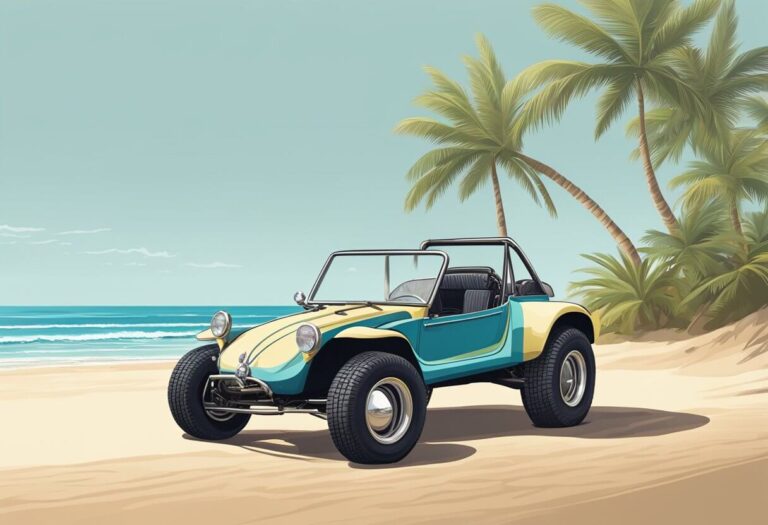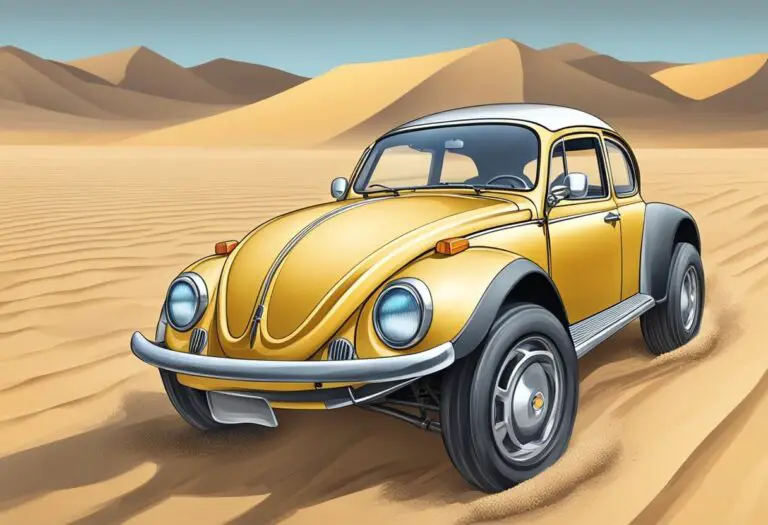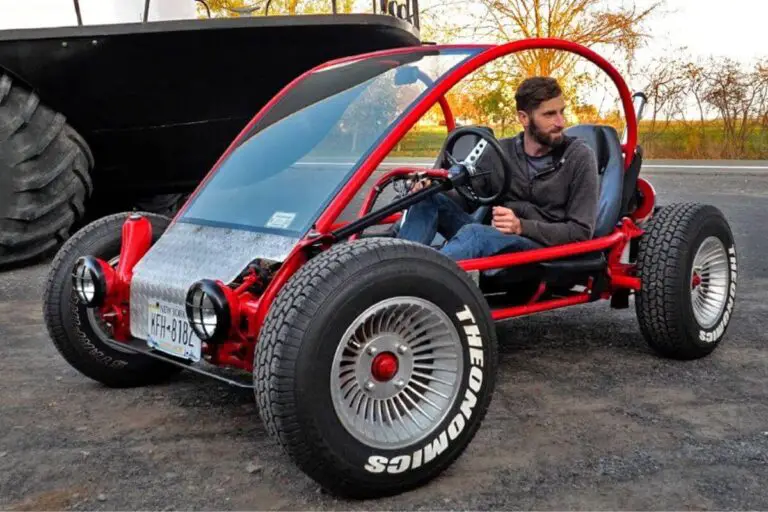1968 Volkswagen Dune Buggy: A Classic Beach Cruiser

The 1968 Volkswagen Dune Buggy is a classic car that has captured the hearts of car enthusiasts for decades. This iconic vehicle was originally designed for off-road use, but its unique design and fun driving experience made it a popular choice for beach-goers and car enthusiasts alike. The dune buggy’s lightweight design, open-air cockpit, and rear-mounted engine made it a blast to drive on sand dunes and beaches, and it quickly became a cultural phenomenon.
The history of the dune buggy is closely tied to the Volkswagen Beetle, which served as the platform for many of these vehicles. In the 1960s, a number of companies began producing kits that allowed owners to transform their Beetles into dune buggies. These kits typically included fiberglass body panels, a shortened chassis, and other modifications that made the car more suitable for off-road use. The popularity of the dune buggy peaked in the 1970s, but it remains a beloved classic car today.
Key Takeaways
- The 1968 Volkswagen Dune Buggy is a classic car that has captured the hearts of car enthusiasts for decades.
- The history of the dune buggy is closely tied to the Volkswagen Beetle, which served as the platform for many of these vehicles.
- The popularity of the dune buggy peaked in the 1970s, but it remains a beloved classic car today.
History of the Dune Buggy
Origins of the 1968 Model
The Volkswagen Dune Buggy, also known as the Beach Buggy, is a recreational vehicle designed for use on sand dunes and beaches. The first dune buggies were built in the late 1950s by hot rodders in Southern California who wanted to create a lightweight vehicle that could navigate the desert terrain. The 1968 Volkswagen Dune Buggy was one of the most popular models of its time, featuring a rear-mounted engine and a roofless design that allowed for maximum exposure to the sun and wind.
Popularity and Cultural Impact
The popularity of the Volkswagen Dune Buggy skyrocketed in the 1960s and 1970s, thanks in part to its appearance in movies like “The Endless Summer” and “The Thomas Crown Affair.” The vehicle became a symbol of the counterculture movement, with its carefree, adventurous spirit and association with the beach lifestyle. The dune buggy also had a significant impact on the automotive industry, inspiring the creation of other recreational vehicles like the ATV and the UTV.
Design and Specifications

Chassis and Body
The 1968 Volkswagen Dune Buggy was built on a shortened VW Beetle platform, which made it light and nimble. The chassis was reinforced and modified to improve off-road performance. The body of the Dune Buggy was made of fiberglass, which made it lightweight and resistant to rust. The design was simple and open, with no doors or roof, making it ideal for beach cruising or off-road adventures.
Engine and Performance
The 1968 Volkswagen Dune Buggy was powered by a 1600cc air-cooled engine that produced 60 horsepower. The engine was mounted in the rear of the vehicle, which helped to improve traction and handling. The Dune Buggy had a four-speed manual transmission and was capable of reaching a top speed of around 75 miles per hour. The suspension was modified to improve off-road performance, with reinforced shock absorbers and a raised ground clearance.
Color and Styling Options
The 1968 Volkswagen Dune Buggy was available in a variety of colors, including red, blue, yellow, and green. The body was simple and open, with a minimalistic design that emphasized function over form. The interior was basic, with simple bucket seats and a basic dashboard. The Dune Buggy was designed to be customized, with many owners adding their own personal touches, such as custom paint jobs, chrome accents, and aftermarket wheels.
Manufacturing Details
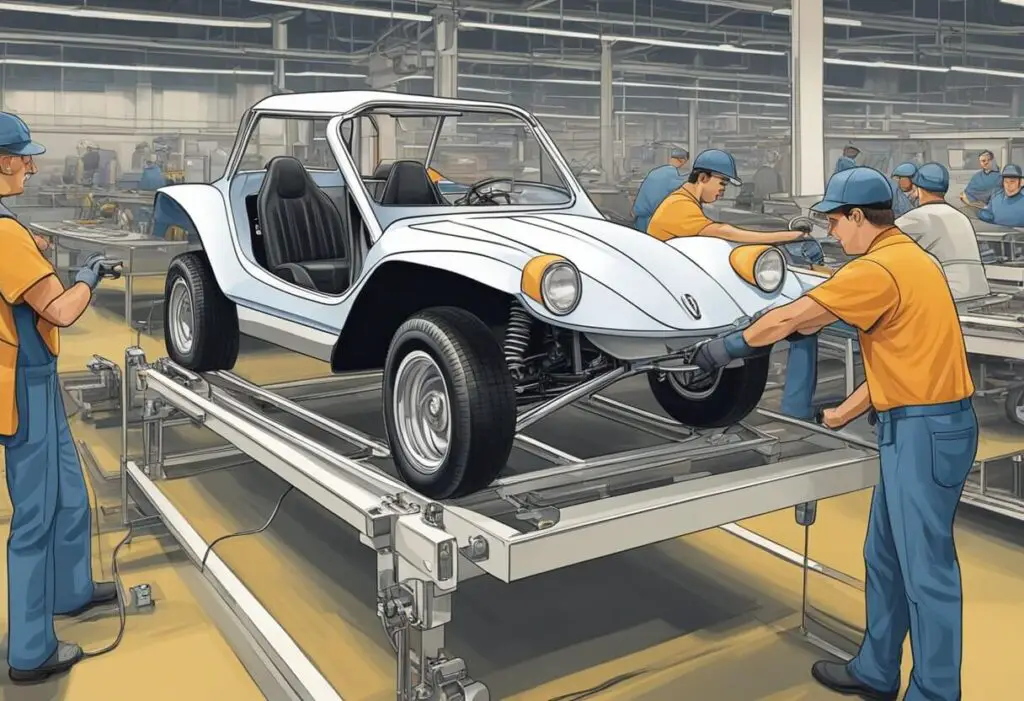
Production Numbers
The 1968 Volkswagen Dune Buggy was produced in limited numbers, with an estimated 5,000 units manufactured during that year. The production numbers were relatively low, which makes the 1968 Volkswagen Dune Buggy a rare find today.
Factory Locations
The Volkswagen Dune Buggy was not manufactured in a single factory, but rather, it was assembled by various companies using Volkswagen Beetle components. The Volkswagen Beetle was produced in factories located in Germany, Brazil, and Mexico. The Dune Buggy was assembled by companies in the United States, such as Meyers Manx and Kellison, using the Beetle’s chassis and engine.
The Meyers Manx Dune Buggy, for example, was assembled in California by Bruce Meyers. The Kellison Dune Buggy, on the other hand, was assembled in Florida by Jim Kellison. Other companies that produced Dune Buggies during this time include Fiberfab, Berrien Buggy, and Empi.
Ownership Experience

Driving Dynamics
Owning a 1968 Volkswagen Dune Buggy is a unique and thrilling experience. The open-air design allows for an immersive driving experience that is hard to match. The lightweight body and rear-wheel-drive layout provide excellent maneuverability and agility. The buggy’s suspension system is designed to handle rough terrain, making it an ideal vehicle for off-road adventures. The buggy’s low center of gravity also makes it a blast to drive on winding roads, as it hugs the road and provides a fun and engaging driving experience.
Maintenance and Upkeep
Owning a classic vehicle like a 1968 Volkswagen Dune Buggy requires regular maintenance and upkeep. The buggy’s air-cooled engine is relatively simple to maintain, but it still requires regular oil changes, tune-ups, and other routine maintenance. Keeping the buggy’s body and interior in good condition also requires regular cleaning and detailing. It’s essential to keep the buggy’s tires and brakes in good condition, as they are critical components that ensure the buggy’s safety and performance.
Market and Collectability
Current Valuation Trends
The 1968 Volkswagen Dune Buggy is a classic car that has seen a surge in popularity in recent years. As a result, the market value of these vehicles has increased significantly. According to recent market data, the average price of a 1968 Volkswagen Dune Buggy is around $14,500 – $20,000, depending on the condition and mileage of the vehicle.
In the past few years, the prices of these vehicles have been steadily rising. This trend is expected to continue, as the demand for classic cars like the 1968 Volkswagen Dune Buggy continues to grow.
Auction and Sales Records
Auction and sales records show that the 1968 Volkswagen Dune Buggy is a highly sought-after vehicle among collectors. In recent years, these vehicles have been sold at auction for prices ranging from $5,750 to $25,000.
One of the factors that contribute to the collectibility of the 1968 Volkswagen Dune Buggy is its unique design. The vehicle was designed to be used in off-road conditions, and it features a lightweight fiberglass body that is both durable and stylish.
Restoration and Customization
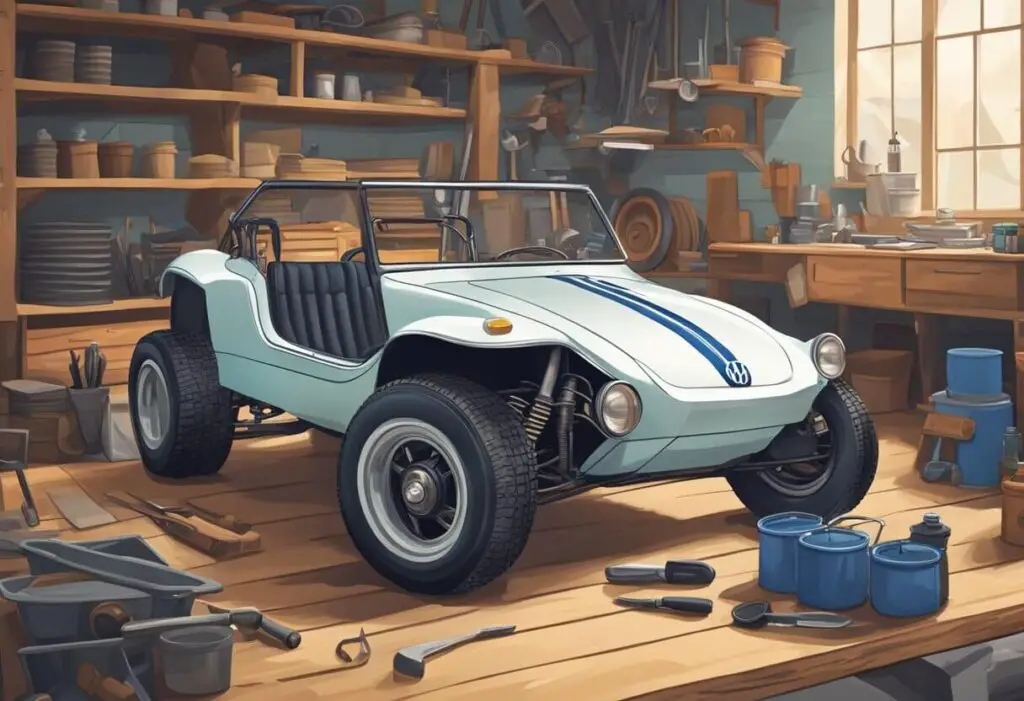
When it comes to restoring and customizing a 1968 Volkswagen Dune Buggy, there are a variety of options available. Here are some tips and ideas to help you get started.
Aftermarket Parts and Accessories
There are many aftermarket parts and accessories available for the 1968 Volkswagen Dune Buggy. These can include performance upgrades, such as high-performance exhaust systems, air intakes, and suspension components. Other popular upgrades include custom wheels and tires, body kits, and interior upgrades such as custom seats and steering wheels.
One popular option for customizing a Dune Buggy is to install a roll cage. This not only adds a level of safety to the vehicle but can also give it a more aggressive look. Other popular accessories include LED lighting kits, sound systems, and custom paint jobs.
DIY Restoration Tips
If you’re looking to restore a 1968 Volkswagen Dune Buggy on your own, there are a few things to keep in mind. First, it’s important to have a solid plan in place before you begin. This should include a list of all the parts and materials you’ll need, as well as a timeline for completing the project.
One of the first steps in restoring a Dune Buggy is to assess the condition of the vehicle. This will help you determine which parts need to be replaced and which can be restored. It’s also important to pay close attention to the body of the vehicle, as rust and other damage can cause serious problems down the line.
When it comes to restoring the interior of a Dune Buggy, there are a few key areas to focus on. These include the seats, dashboard, and steering wheel. It’s also important to pay attention to the electrical system, as faulty wiring can cause a variety of problems.
Clubs and Communities
Local and International Clubs
For enthusiasts of the 1968 Volkswagen Dune Buggy, there are several clubs and communities that they can join. These clubs are great sources of information and camaraderie for those who have a passion for these classic vehicles.
One such club is the Vintage Fiberglass Volkswagen Club, which is a Facebook group that was created to bring together individuals who share a love for old dune buggies. Members of this club can share tips and pointers, as well as buy, sell, and trade VW parts for their vintage buggies.
Another group that is worth checking out is the Manx Club Classifieds. This Facebook group is dedicated to the Manx-style dune buggy, which was created by Bruce Meyers in the 1960s. Members of this club can buy and sell dune buggies, as well as share information about these classic vehicles.
Events and Meetups
In addition to online communities, there are also several events and meetups that enthusiasts of the 1968 Volkswagen Dune Buggy can attend. These events provide a great opportunity for individuals to showcase their vehicles and meet others who share their passion.
One such event is the Dune Buggy Invasion, which takes place annually in Pismo Beach, California. This event attracts hundreds of dune buggy enthusiasts from all over the country, who come together to show off their vehicles and participate in various activities.
Another event that is worth attending is the Buggies on the Beach event, which takes place in Wildwood, New Jersey. This event features a parade of dune buggies, as well as a car show and various other activities.
Media and Appearances
Movies and Television
The 1968 Volkswagen Dune Buggy has made numerous appearances in movies and television shows over the years. It has become an iconic vehicle in popular culture, especially in the United States. One of the most famous appearances of the Dune Buggy was in the 1968 movie “The Thomas Crown Affair,” where Steve McQueen drove a Meyers Manx Dune Buggy. The movie helped to popularize the Dune Buggy and made it a symbol of freedom and adventure.
Another popular movie that featured the Dune Buggy was “The Beach Bum” (2019), starring Matthew McConaughey. The movie showcased a custom-built Dune Buggy that was designed specifically for the film. The vehicle was equipped with a 1500cc engine and a custom paint job that featured a psychedelic design.
Print and Online Publications
The 1968 Volkswagen Dune Buggy has also been featured in numerous print and online publications over the years. One of the most notable publications that featured the Dune Buggy was “Car and Driver” magazine. The magazine featured a review of the Dune Buggy in its August 1968 issue, praising the vehicle for its off-road capabilities and unique design.
In recent years, the Dune Buggy has also been featured in online publications such as “Motor Trend” and “Top Gear.” These publications have highlighted the Dune Buggy’s enduring popularity and have showcased some of the most unique and custom-built Dune Buggies from around the world.
Legal and Safety Considerations
When considering the purchase of a 1968 Volkswagen Dune Buggy, there are several legal and safety considerations to keep in mind.
Legal Considerations
Firstly, it is important to ensure that the Dune Buggy is street legal in the state or country where it will be driven. Laws regarding Dune Buggy registration and operation vary by location, so it is crucial to research the specific regulations in the area of intended use.
Additionally, it is important to ensure that the Dune Buggy has all necessary documentation, including a title and registration papers. This will ensure that the vehicle can be legally operated on public roads.
Safety Considerations
Safety is also a crucial consideration when operating a 1968 Volkswagen Dune Buggy. These vehicles typically do not have standard safety features such as seat belts, airbags, or roll cages. It is important to take precautions to ensure the safety of both the driver and passengers.
One important safety consideration is the use of helmets. While not required in all locations, helmets can provide crucial protection in the event of an accident. Additionally, it is important to ensure that all passengers are properly secured in the vehicle, either through the use of seat belts or other safety restraints.
Another safety consideration is the maintenance of the vehicle. Regular maintenance and inspections can help ensure that the Dune Buggy is in safe operating condition. This includes checking brakes, steering, and suspension components, as well as ensuring that all lighting and signaling systems are functioning properly.
All in all, while 1968 Volkswagen Dune Buggies can be a fun and exciting vehicle to own and operate, it is important to carefully consider legal and safety considerations before making a purchase.

